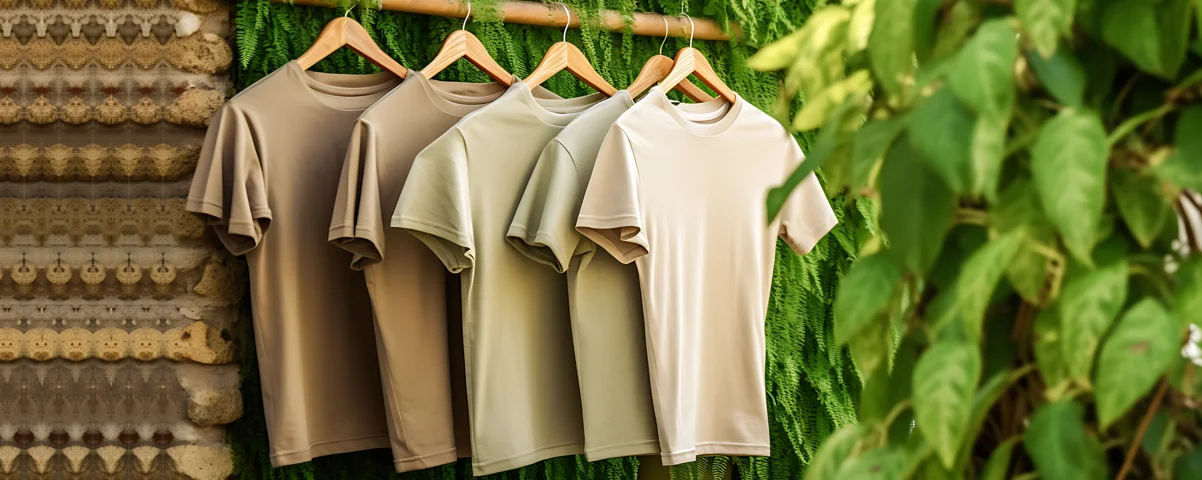Cape Town Sustainable Fashion: Honest Apparel for a Better World
Cape Town Sustainable Fashion: Honest Apparel for a Better World
Blog Article
Keep Ahead of the Curve by Discovering Ingenious Fashion Trends
In a sector as vibrant as fashion, remaining ahead involves more than just adhering to existing patterns-- it demands an expedition of development. Smart fabrics, as an example, are changing garments into practical work of arts, while 3D printing is transforming layout processes with its personalized, waste-reducing capacities. As sustainability comes to be a cornerstone, technologies like environmentally friendly materials and circular style techniques are improving ecological obligation - Cape Town Sustainable Fashion. Additionally, the convergence of technology and fashion advertises a brand-new era of consumer engagement. Just how, then, can these emerging trends redefine the future of style, and what implications do they hold for brand names looking for to flourish in this evolving landscape?

Embracing Smart Textiles
In the last few years, the apparel industry has actually witnessed a transformative change with the assimilation of smart fabrics, a sophisticated innovation that mixes innovation with textile. This evolution represents not just a combination of aesthetic appeals and functionality but additionally a substantial jump towards sustainability and customization in vogue. Smart fabrics, also understood as e-textiles, embed innovative electronics such as sensing units and conductive threads within the textile, making it possible for garments to engage with the setting or the wearer.
These fabrics are made to keep track of physiological criteria, such as heart rate or body temperature, giving real-time health and wellness analytics. Beyond health and wellness applications, clever fabrics are likewise being made use of for adaptive apparel, which can change shade or pattern in action to environmental stimulations, hence supplying a vibrant style experience.
In addition, the advancement of energy-harvesting textiles that generate power from activity or sunlight is leading the way for self-dependent wearable modern technology. This advancement is appealing to ecologically mindful customers and developers intending to lower the eco-friendly footprint of style. As research study and development in this field advance, clever fabrics are expected to become progressively widespread, improving the landscape of modern-day fashion with their multifunctional capacities.
The Increase of 3D Printing
Revolutionizing the production landscape, 3D printing has become a game-changer in the garment industry. This innovative technology has allowed developers to press the limits of creative thinking, creating complex and personalized garments that were formerly unimaginable. By leveraging digital style and additive production, 3D printing facilitates the production of intricate geometries and patterns, permitting designers to explore brand-new appearances and frameworks.
A remarkable benefit of 3D printing in fashion is its ability to produce on-demand, reducing waste and reducing inventory needs. This performance not only enhances production procedures but additionally permits quick prototyping, allowing developers to bring their visions to life in a shorter timeframe. Moreover, 3D printing sustains modification somewhat unparalleled by conventional approaches, using distinct styles and personalized fits customized to individual consumer choices.
The surge of 3D printing has actually additionally democratized style, making it easily accessible to emerging developers who can now make top notch items without substantial monetary investment in typical production facilities. As innovation remains to advancement, the apparel industry is poised to harness the complete potential of 3D printing, checking out new products and next methods that will undoubtedly redefine how style is developed and created.
Sustainable Style Technologies
As the fashion business faces the pressing need for environmental obligation, sustainable fashion developments have arised at the forefront of transformative change. The expanding recognition of environmental effect has actually sustained a change towards more eco-conscious methods and products. Brands and designers are currently focusing on sustainability, including methods that minimize waste and minimize carbon impacts.
One significant growth is the rise of round style, which stresses recycling and upcycling to extend the lifecycle of garments. This method not just minimizes waste however also encourages consumers to take on a more conscious technique to clothing consumption.
An additional breakthrough exists in the fostering of innovative dyeing strategies that make use of waterless procedures or natural dyes, therefore minimizing the large amounts of water and chemicals commonly used in fabric dyeing. In addition, advancements in biotechnology have brought about the production of lab-grown leather and fabrics, providing cruelty-free and eco-friendly options to standard products. With these pioneering initiatives, the garment industry is making meaningful strides towards a more lasting future.

Tech-Integrated Apparel
Tech-integrated garments stands for a revolutionary combination of fashion and technology, improving just how people interact with their clothes. This cutting-edge domain name is noted by the inclusion of clever fabrics and embedded electronic components, improving both performance and visual allure. From health and fitness trackers embedded in sportswear to heated jackets managed through smart device apps, tech-integrated garments supplies customers unprecedented ease and versatility.
Pioneering brands are driving this pattern, concentrating next on producing garments that react to environmental stimulations or user commands. For instance, some garments can alter shade or pattern in feedback to temperature level changes, while others incorporate biometric sensors to keep track of health metrics like heart price or stress degrees. The seamless integration of modern technology right into textiles additionally includes ecological sustainability, with initiatives to develop self-cleaning textiles or garments that adapt to weather, therefore reducing the demand for multiple layers.
Additionally, the introduction of wearable modern technology is not just restricted to garments but includes devices like watches and eyeglasses, additional expanding the extent of tech-integrated fashion. As the market continues to innovate, the potential for modification and customization in apparel grows, using consumers unique, tech-enhanced style experiences that deal with their specific requirements and choices.
Future of Virtual Fashion
In recent years, the future of online fashion has actually become a transformative force within the industry, leveraging advancements in electronic technology to redefine how style is produced, experienced, and taken in. By integrating enhanced Click Here fact (AR), online fact (VIRTUAL REALITY), and 3D style devices, designers can currently craft interactive and immersive experiences that go beyond conventional style borders. Virtual fashion enables the creation of garments that exist solely in digital atmospheres, offering countless opportunities for development without the limitations of physical manufacturing.
This electronic change not just offers opportunities for innovative expression however likewise addresses sustainability issues intrinsic in conventional style practices. Cape Town Sustainable Fashion. By getting rid of the requirement for physical sources, virtual style lowers waste and lessens carbon impacts. Moreover, the rise of digital fashion straightens with the raising customer demand for customized and distinct experiences, as virtual garments can be tailored and customized to specific preferences easily

Conclusion
The fashion industry's future lies in the integration of lasting techniques and cutting-edge innovations. Virtual style is poised to redefine customer communications.
In current years, the style sector has seen a transformative change with the assimilation of wise textiles, a sophisticated development that mixes technology with fabric.As the fashion sector grapples with the pushing need for environmental responsibility, sustainable fashion innovations have actually arised at the center of transformative adjustment.In current years, the future of online style has actually emerged as a transformative force within the industry, leveraging improvements in electronic innovation to redefine just how style is created, experienced, and taken in. The surge of digital fashion lines up with the enhancing customer need for distinct and individualized experiences, as online garments can be tailored and customized to specific preferences with convenience.
The style industry's future lies in the integration of sustainable methods and innovative modern technologies.
Report this page